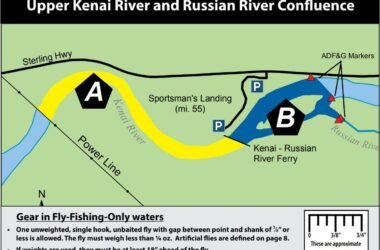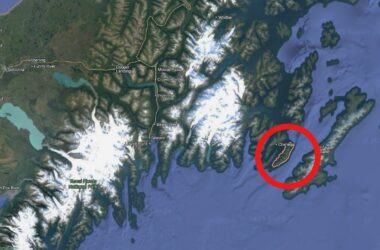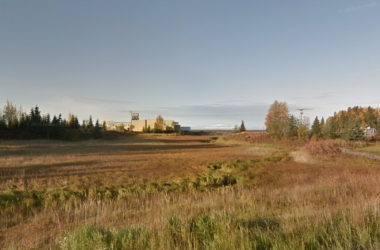The Alaska Volcano Observatory (AVO) issued an Advisory alert for Mount Spurr in October due to increased seismic activity and gas emissions near its surface. The volcano had two major eruptions in 1992 and 1953, which released ash clouds across hundreds of miles and dropped quarter-inch thick volcanic ash throughout the region, including Anchorage. The 1992 eruption at Mount Spurr resulted in the complete closure of Ted Stevens Anchorage International Airport and produced weeks of air quality warnings.
A new ash cloud formation depends on wind direction, eruption strength, and occurrence time.
In an interview with KSRM’s Life on the Kenai, AVO geologist Michelle Coombs discussed preparatory actions at an early stage.
“Volcanoes provide a considerable amount of warning time for the public because they represent somewhat manageable natural threats,” Coombs said. “Mount Spurr has shown indications of unrest starting from last spring. The seismic monitoring station recorded increasing numbers of earthquakes in addition to summit melting and rising gas activity during the fall months.
According to Coombs, the Aviation Color Code remains Yellow despite increased unrest but remains below the critical alert level. She says the time to prepare stands as we continue our vigilance regarding the situation.
When seismic activity grows more intense through greater earthquake strength or gas emission rates, the AVO will elevate the alert level to Orange, meaning an eruption might happen in days.
The unrest needs to become very noticeable before the team uses the Orange level, Coombs says, adding that some signs of activity should appear before eruptions take place. “Still, volcanoes are unpredictable, and surprises can happen,” she said.
Ashfall: The Primary Hazard
The primary issue for Southcentral communities is ashfall, which causes problems with air quality, water supplies, vehicle functionality, and health risks. Volcanic ash differs from wildfire ash because it contains sharp rock and minerals along with glass fragments that can scratch engine parts, HVAC systems, and sensitive electronic equipment.
John Werner of Joint Base Elmendorf-Richardson Emergency Management Department stated that volcanic ash creates engine blockages, causes electronics failure, and produces skin, eye, and lung irritation and inflammation. A tiny amount of ash causes problems, while ash can remain harmful to air quality after it settles for many weeks or months.
Ash from a major volcanic eruption would create dark skies that would ground flights and make roads slippery and dangerous, especially when ash combines with rain or snow.
What You Can Do Now
The early gathering of emergency supplies enables communities to withstand ashfall better. The following essential steps help residents prepare for this situation:
Emergency Kit Essentials:
The essential components for your emergency kit should include:
- Two weeks of non-perishable food and drinking water
- N95 or dust masks to protect against inhaling ash
- Goggles to shield eyes from airborne particles
- Plastic sheeting and duct tape to seal windows, vents, and electronics
- Battery-powered radio, flashlights, and extra batteries
- First aid kit, including prescription medications
- Spare air and oil filters for vehicles
- Cleaning supplies, such as fine-particle vacuum filters and damp cloths
During Ashfall:
- Stay indoors as much as possible
- Close windows, doors, and vents
- Turn off air conditioning and heating systems
- Cover electronics with plastic
- Wear a mask and goggles if you go outside
- Avoid driving; if necessary, go slow and clean ash from your windshield with water
After Ashfall:
- Wear protective gear while cleaning
- The ash should be moistened with water before cleaning since it helps minimize dust.
- Do not wipe surfaces because vacuuming provides the best protection against damage.
- Wash all vehicles using water instead of dry brushing to remove ash.
- Follow local advisories along with monitoring the current air quality conditions.
Stay Informed
The public can monitor Mount Spurr’s current status and access daily ashfall forecast models on the AVO website. The Alaska Volcano Observatory maintains its data through two daily updates while working with the National Weather Service in Anchorage to issue official ashfall warnings.
The USGS allows subscribers to receive volcano alerts through its website at [volcanoes.usgs.gov/vns], while the FEMA app provides weather alerts, shelter information, and hazard preparation advice specific to your area.
During this time of increased volcanic activity Coombs urged residents to use the present opportunity for preparation.
The activity level does not indicate an upcoming eruption, so residents should take precautions against being surprised by an eruption in the future. Taking action right now will protect you and your family members in case Mount Spurr experiences an eruption.






